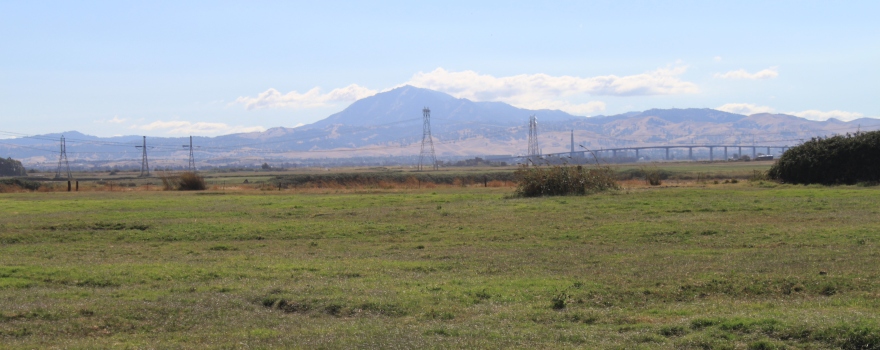 A system combining a western conveyance, operable gates, and a ‘polishing’ facility would have all the benefits of the tunnels plan and none of the drawbacks, he says
A system combining a western conveyance, operable gates, and a ‘polishing’ facility would have all the benefits of the tunnels plan and none of the drawbacks, he says
This commentary is written exclusively for Maven’s Notebook by Commentary by Craig Wilson, the first Delta Watermaster and former Chief Counsel to State Water Board.
He writes:
“On May 15, 2015 the Sacramento Bee published my guest editorial entitled ” A Better Alternative to Delta Tunnels“. Because of the Bee’s limitations on the length of editorials, the piece could not get into the details of such a plan. The purpose of this article is to more fully explain the alternative.
As I stated in the editorial, there is a clear need to improve on the present method of conveying water from the north to the south. The tunnels plan does offer some improvements to the present system. One, bypassing the Delta with an isolated facility that takes water out of the Sacramento Rover upstream to the Delta assures that the export water supply will be available on a reliable basis. Even if there is a catastrophic levee failure in the Delta, the tunnel bypass system will ensure that water can be supplied to the south. Second, taking the water supply from the Sacramento River above the Delta will guarantee the the water exported will be of high water quality. Third, the natural flow regime in the Delta from east to west will be partially restored to the benefit of the fisheries.
Notwithstanding these three major benefits, the Tunnels Plan suffers from some major drawbacks. If a major chunk of water is bypassed before reaching the Delta, the quality of the water in the Delta will be degraded. Such degradation will harm both the fisheries and Delta agricultural areas. Conversely if another major chunk of water is dedicated for release into the Delta to protect its water quality, the amount of water that could be exported south would be less than under the present system. Thus while the Tunnel Plan would improve reliability and export water quality, the Delta itself would suffer greatly.
The alternative I propose addresses the potential benefits of the Tunnels Plan and avoids the drawbacks. Let’s call it the Western Delta Conveyance System. The System consists of three major elements: a western Delta diversion /conveyance facility, an operable gate downstream of the diversion points, and a facility to ensure that the quality of water diverted into the western Delta conveyance is of adequate quality.
A western Delta conveyance system would fully restore the natural west to east flow pattern in the Delta. Fresh water would flow through the Delta to the western diversion points. In addition to restoring the natural flow pattern and improving Delta water quality, a western Delta conveyance facility would be much less expensive to build than the 40-mile Tunnel Plan. The alternative system would be less than one third the length, would require only one or two diversion structures, and such structures could be built on state owned land on Sherman Island instead of on lands that would be taken from third parties. This monetary savings would be more than enough to build the two other components of the Western Delta Conveyance System.
The operable gate facility would address the water reliability issue. Located downstream
of the western diversion points, the gate system would remain open most of the time so that navigation and fish migration would not be affected. It would look somewhat like the flappers on a pinball machine and would only be closed in the event of a catastrophic event such as a major levee failure or super high tide. Closing the gates would take less than an hour and would prevent major salt water intrusion into the Delta while levee repairs are made. In short, the operable gates would act as an insurance policy to protect both the export system and the Delta itself. Operable gate facilities are already in place In Europe and are proven technology. For example the Maeslant structure in Holland has protected that area for decades.The third component of the Western Delta Conveyance System would address the quality of the water being exported. Most of the time the water in the Sacramento River at Sherman Island in the western Delta is of adequate water quality for export. To address those times when the water gets a little too salty, a facility would be built to “polish” such water to a suitable level. A major reverse osmosis system would not be necessary. Other systems are available for the “polishing” a slightly too salty water supply. Such systems are low tech and do not have the environmental problems associated with reverse osmosis. One option is a flow through electrode system articulated by the Lawrence Livermore Laboratory and the Waterchip being developed by Okeanos.
In short, the three elements of the Western Delta Conveyance System combine a western conveyance, operable gates to address reliability, and a facility to polish the water at the diversion points when necessary. Such a system contains all the benefits of the Tunnels Plan and none of the drawbacks.“
Note: This commentary was written by Craig Wilson, the first Delta Watermaster and former Chief Counsel to State Water Board. The views and opinions expressed in guest commentaries are those of the authors and do not necessarily reflect the official policy or position of Maven or Maven’s Notebook.

Help fill up Maven’s glass!
Maven’s Notebook remains only half-funded for the year.

